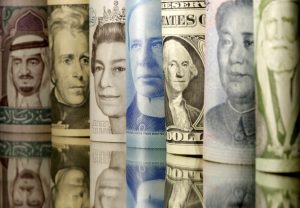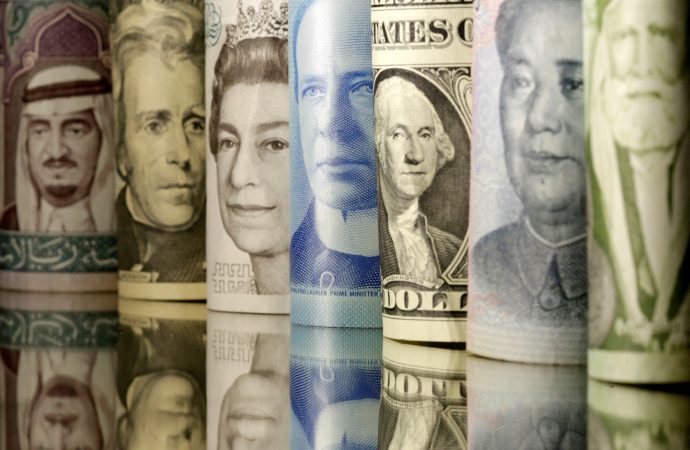Inflation is a crucial economic concept that can significantly impact your financial well-being. By understanding how inflation works and its effects on savings and investments, individuals can make more informed decisions to protect and grow their wealth. This article delves into the nature of inflation, its causes, measurement methods, and how it affects various types
Inflation is a crucial economic concept that can significantly impact your financial well-being. By understanding how inflation works and its effects on savings and investments, individuals can make more informed decisions to protect and grow their wealth. This article delves into the nature of inflation, its causes, measurement methods, and how it affects various types of savings and investments. Additionally, we provide an analysis and comparative tables to further elucidate these effects.
What is Inflation?

This image is taken from google.com
Inflation refers to the rate at which the general level of prices for goods and services rises, subsequently eroding the purchasing power of money. Essentially, as inflation increases, each unit of currency buys fewer goods and services. Central banks, such as the Federal Reserve in the United States, often attempt to control inflation to maintain economic stability.
Causes of Inflation
There are several causes of inflation, including:
- Demand-Pull Inflation: Occurs when demand for goods and services exceeds supply, leading to higher prices.
- Cost-Push Inflation: Arises when the costs of production increase, leading producers to raise prices to maintain profit margins.
- Built-In Inflation: Linked to adaptive expectations, where businesses and workers expect higher prices and wages, perpetuating a cycle of rising costs.
- Monetary Inflation: Results from an increase in the money supply, where more money chases the same amount of goods and services, leading to price increases.
Measuring Inflation
Inflation is typically measured using price indices, such as:
- Consumer Price Index (CPI): Measures the average change in prices paid by consumers for a basket of goods and services.
- Producer Price Index (PPI): Measures the average change in selling prices received by domestic producers for their output.
- Personal Consumption Expenditures (PCE) Index: Reflects changes in the prices of goods and services consumed by households.
Impact of Inflation on Savings
Inflation can have a detrimental impact on savings, particularly if the interest rates on savings accounts are lower than the inflation rate. When inflation outpaces the return on savings, the real value or purchasing power of saved money decreases over time.
Savings Accounts
Traditional savings accounts typically offer interest rates that are lower than inflation rates, meaning that the real value of money in these accounts diminishes over time. For example, if the inflation rate is 3% and your savings account yields a 1% interest rate, the purchasing power of your savings decreases by 2% annually.
Certificates of Deposit (CDs)
Certificates of Deposit may offer slightly higher interest rates than regular savings accounts, but they can still fall short of inflation rates. If a CD offers a 2% return and inflation is 3%, the real value of your investment decreases by 1% per year.
Inflation-Protected Securities
Investments such as Treasury Inflation-Protected Securities (TIPS) are designed to protect against inflation. The principal value of TIPS increases with inflation, ensuring that the purchasing power of your investment is preserved.
Impact of Inflation on Investments
Inflation affects various types of investments differently. Understanding these effects can help investors make more informed choices to mitigate the adverse impacts of inflation.
Stocks
Historically, stocks have outperformed inflation over the long term, making them a favorable investment during inflationary periods. Companies can often pass increased costs to consumers, maintaining their profitability. However, high inflation can lead to higher interest rates, which can negatively impact stock prices in the short term.
Bonds
Bonds are generally more adversely affected by inflation. Fixed-income investments like bonds provide a set interest payment, which becomes less valuable as inflation rises. Inflation erodes the purchasing power of these fixed payments, reducing the real returns on bonds.
Real Estate
Real estate is often considered a hedge against inflation because property values and rental income tend to rise with inflation. As the cost of living increases, so does the value of tangible assets like real estate.
Commodities
Investing in commodities such as gold and oil can also provide a hedge against inflation. These assets typically increase in value during inflationary periods, preserving the purchasing power of your investments.
Comparative Analysis of Inflation’s Impact on Financial Instruments
To better understand the effects of inflation on various savings and investment options, the following tables provide a comparative analysis.
Table 1: Analysis of Savings Instruments
| Savings Instrument | Interest Rate | Inflation Rate | Real Return (Interest Rate – Inflation Rate) |
|---|---|---|---|
| Savings Account | 1% | 3% | -2% |
| Certificate of Deposit | 2% | 3% | -1% |
| Treasury Inflation-Protected Securities (TIPS) | 1% | 3% | 0% (adjusted for inflation) |
Table 2: Comparative Analysis of Investment Instruments
| Investment Instrument | Historical Return | Inflation Rate | Real Return (Historical Return – Inflation Rate) |
|---|---|---|---|
| Stocks | 8% | 3% | 5% |
| Bonds | 4% | 3% | 1% |
| Real Estate | 7% | 3% | 4% |
| Commodities (e.g., Gold) | 6% | 3% | 3% |
Strategies to Mitigate Inflation Risk
To protect your savings and investments from the detrimental effects of inflation, consider the following strategies:
Diversify Your Portfolio
Diversification involves spreading investments across various asset classes, such as stocks, bonds, real estate, and commodities. This strategy can help mitigate risks and take advantage of assets that perform well during inflationary periods.
Invest in Inflation-Protected Securities
Incorporating inflation-protected securities like TIPS into your portfolio can safeguard your investments against inflation. These securities adjust for inflation, preserving the purchasing power of your money.
Focus on Growth Investments
Investing in growth-oriented assets like stocks and real estate can help outpace inflation over the long term. These investments have historically provided returns that exceed inflation rates.
Regularly Review and Adjust Your Investments
Regularly reviewing your investment portfolio and making necessary adjustments can ensure that your investments remain aligned with your financial goals and the prevailing economic environment.
Conclusion
Understanding inflation and its effects on savings and investments is essential for maintaining and growing your wealth. By recognizing the impact of inflation on various financial instruments and employing strategies to mitigate inflation risk, individuals can better protect their purchasing power and achieve their long-term financial objectives. Investing in a diversified portfolio, focusing on growth investments, and utilizing inflation-protected securities are key strategies to safeguard your financial future in an inflationary environment.
















